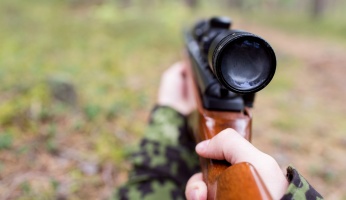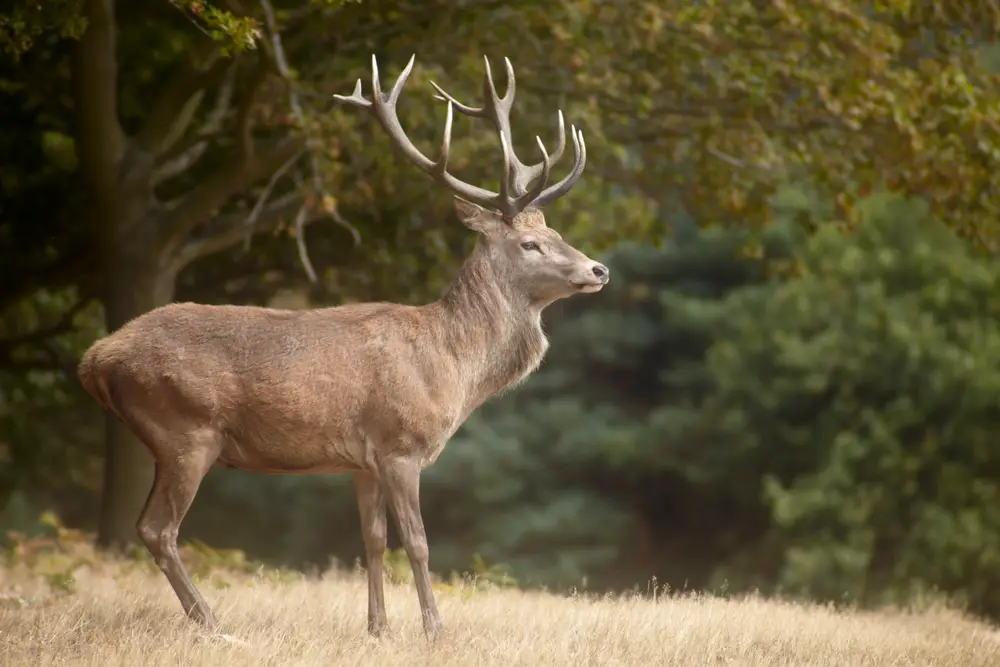20 Useful Tips on Deer Hunting you May Not Know!
 20 Useful Tips on Deer Hunting you May Not Know!
thegearhunt.com
20 Useful Tips on Deer Hunting you May Not Know!
thegearhunt.com
Deer hunting is a complicated activity. It takes genuine know-how to be great at it. A decent hunter has both a creative personality and an analytical mind. You have to be able to think out of the box, attempt things that others won’t.
20 useful tips for deer hunting season
The deer hunting season is usually brief and often intense. Every deer hunter must be set up for anything, keeping in mind that the end goal will be to exploit each circumstance that presents itself.
Figure out how to capitalize on each open door offered, as another opportunity may not come along. The following tips that have served me and my accomplices well in over my years of deer hunting may help you achieve more during your deer hunting expenditures.
1. Make a list
Have you ever embarked on a hunting expenditure, and a couple of hours into the game, you noticed you forgot some of the tools? How do you avoid this next time? Quite easy, simply make a list. No matter how organized you may think you are, there is a high probability of you forgetting one or two things. That’s why you need a deer hunter’s checklist.
This is just a simple checklist that contains a list of all your hunting tools and devices which you can always go through to be sure that all your equipment are intact. Confirm things as you place them in the tote. You’ll never again end up in a wild searching for your ammunition, blade or even knife.
When the hunting season is over, use the list to repair some of your worn out tools, replace them with new ones and keep them safe. Do this as soon as you can so as not to be found wanting by the time the next hunting season sets in.
2. Do not let the deer know what you are doing
One thing about deer hunting is this, never walk in the event that you can drive and never drive in the event that you can utilize your binoculars. Stamping around by walking everywhere on your hunting zone is a certain approach to telling all the game that you are after them.
An ideal way to survey a hunting zone is to sit for a couple of hours, ideally at first light and sunset, at an elevated point, for example, a hilltop.
3. Do not let the deer smell you
Deer are usually alarmed by human scent. Use a fragrance-free cleanser to shower before each hunting excursion. Do whatever it takes not to contaminate your hunting garments while in transit to the field. Seal them up in a plastic compartment or a bag with dirt, leaves, and other ground debris and junk from around you until you get to your hunting area. Doing as such will permit your hunting attire to assume the normal scent which saturates your hunting area.
4. Utilize the wind
Bowhunters know how to give careful consideration to wind bearing, yet numerous gun hunters disregard the wind and pay the price when a buck gets their smell and slips away. In the event that you are hunting from a stand with the use of your gun, set it up so you are downwind or possibly crosswind of where you hope to see deer.
Still-hunt into the wind. On a blustery day, you can once in a while walk up on had relations with deer. In the event that you set up a drive, put standers downwind. On the off chance that you drive upwind, deer may notice standers and hover back toward the drivers.
Cagy bucks in some cases do that regardless of the possibility that you drive downwind, however driving upwind enhances your chances.
5. Use your odor eliminator always
Numerous hunters splash down with scent eliminator soon after suiting up and preceding the trek into the stand, yet experienced hunters will convey a smell eliminator with them to the tree stand. After the stroll to the stand, apply a smell eliminator to your body, giving careful consideration to your hair and cap.
Furthermore, another way of eliminating your scent is this; find a long portion of timber with the wind blowing along its length i.e. the wind is blowing from one of the timber to the other end. At the breezy end, pour some deer fragrance at a few territories. Set up your stand high in a tree, just on the edge of the timber. In case you’re set up sufficiently high, your human scent ought to flow over the deer.
6. Stay to the latest possible time
Try not to take your leave before the legal shooting time comes to an end. Most likely the best time to kill a buck is the last moment of shooting light. Try not to leave your stand like most other hunters.
7. Practice setting up your stand
Work on setting up and bringing down your tree stand before the start of the season. This should be done so low on the tree. Getting into and out of your tree stand as discreetly and quietly as you can under the circumstances is vital to killing a decent buck.
8. Check out aerial photos of your area
You don’t need to possess your own plane, or even by a carrier ticket, to look at aerial photographs of your hunting zone. There most preferred scouting help are obviously aerial photographs. Simply take a look at Google Earth Maps for your hunting zone.
9. Make use of a tree stand blind
Even though some covering is can still be good enough, but most extreme covering will definitely be better. Tree stand blinds trick the vigilant eye of a deer and give the additional advantage of shelter from advancing harsh winds.
10. Call the deer
You have a buck on a neighboring area, however, it doesn’t traverse to your hunting zone until subsequent to shooting time is over. What can you do? Take a stab at enticing the buck to approach your area by calling or with a deer imitation.
11. Cover your entry
Try not to belittle the significance of having the ability to get to your tree stand undetected. It will be really wrong for you to even believe that going in under the cover of darkness will offer assistance. Make it a point to utilize a creek or shade of forest for covering your entry.
12. Protect yourself with tick repellent
Make certain to douse yourself with tick repellant when scouting amid summer and early fall. Tick-borne sicknesses can take a dent at your hunting season. Will you like your hunting season to be over before it even begins?
13. Wash only with a non-scented detergent
In the event that you want to wash your hunting clothes, only do this with a non-scented detergent. Wash all hunting garments in a non-scented detergent every time you’re going to the forested areas. Keep them in a plastic pack until touching base at your hunting zone.
14. Look for reopened scrapes
Amid the late season, scout for revived scratches in deep cover. Surviving bucks are hesitant to get in the open, yet at the same time search for these surviving ones in cover.
15. Make a mock scrape
Try to make a mock scrape. To start with, put on surgical gloves in order to prevent contamination of human scent. Utilizing a stick, scrape the leaves off of a zone about the measure of a hubcap.
16. Look around for mast
At the point when there’s snow on the ground, search for leaves strewn over a region where deer have pawed for a mast. On the off chance that some mast still exists around, that may be a decent spot to set up and sit tight for the deer’s arrival.
17. Observe your shot
What next after you must have taken the shot? In the event that you discover brown hair and pink or red blood having bubbles in it, doubtlessly you got a lung or heart hit. Brown hair and thick, dark red blood show a hit too far back, potentially a liver shot. Watery blood with stomach matter and white hair demonstrate an awful hit.
18. Wear a full-body safety harness
It has been observed that most fall from the tree stands usually happen at the point of climbing into or while moving out of the stand. That is the reason why you have been advised to wear a full-body safety harness anytime you are hunting from a tree stand.
19. Keep out moisture
At the point when muzzleloader hunting in a wet climate, a bit of electrical tape over the end of the barrel will keep out dampness. You essentially shoot through the tape when it’s an ideal opportunity to strike down the deer.
20. Avoid trimming shooting paths
Try as much as possible to abstain from trimming shooting paths and generally contributing a form of disturbance to your hunting zone amid the season. An ideal opportunity to clear shooting paths is amid summer. Astute old bucks can begin to compare the scent of newly cut timber with human predation.
Conclusion
Whether you’re a veteran buck hunter or an amateur going to the forested areas surprisingly, the tips mentioned above can help you get more hunts during the hunting season.















